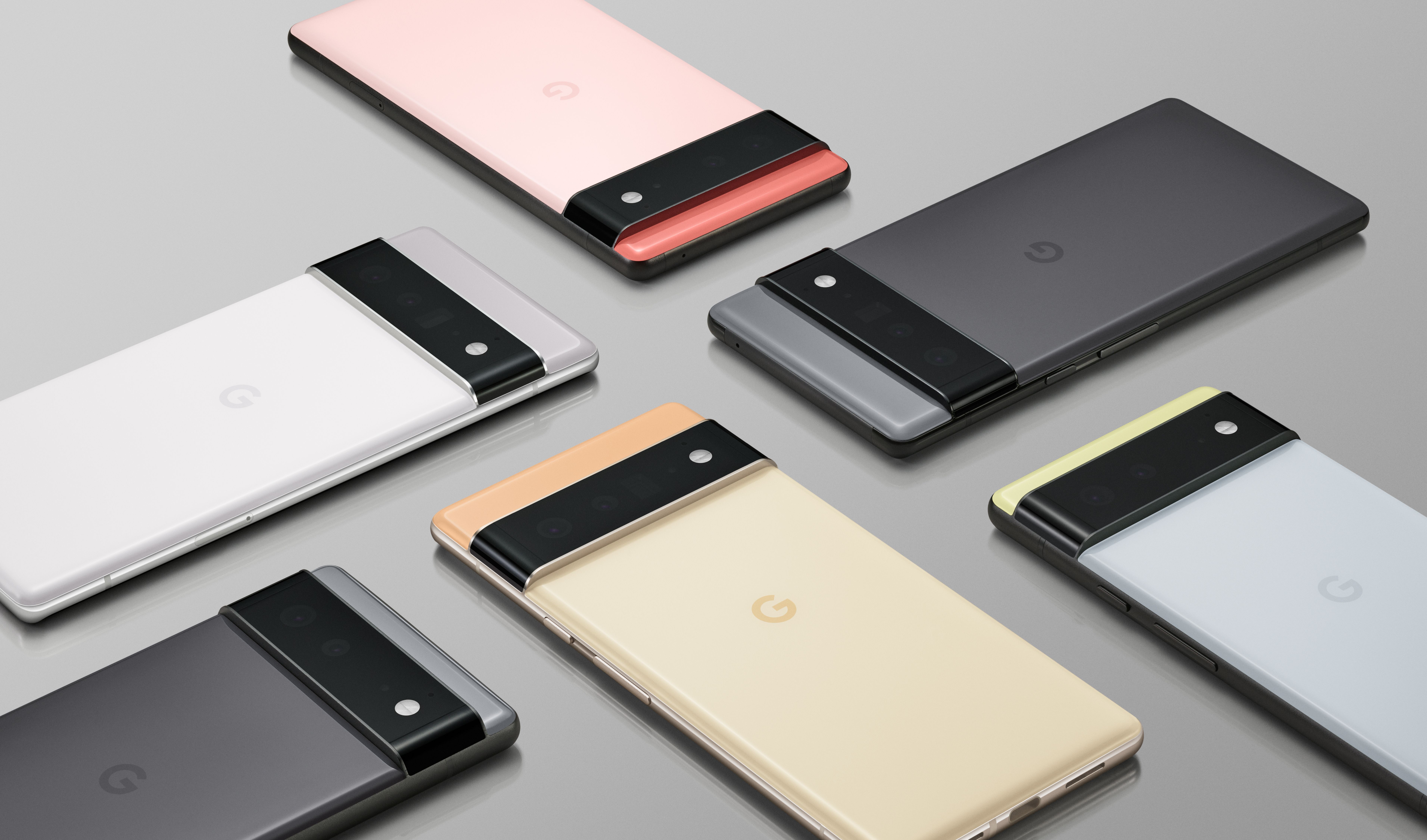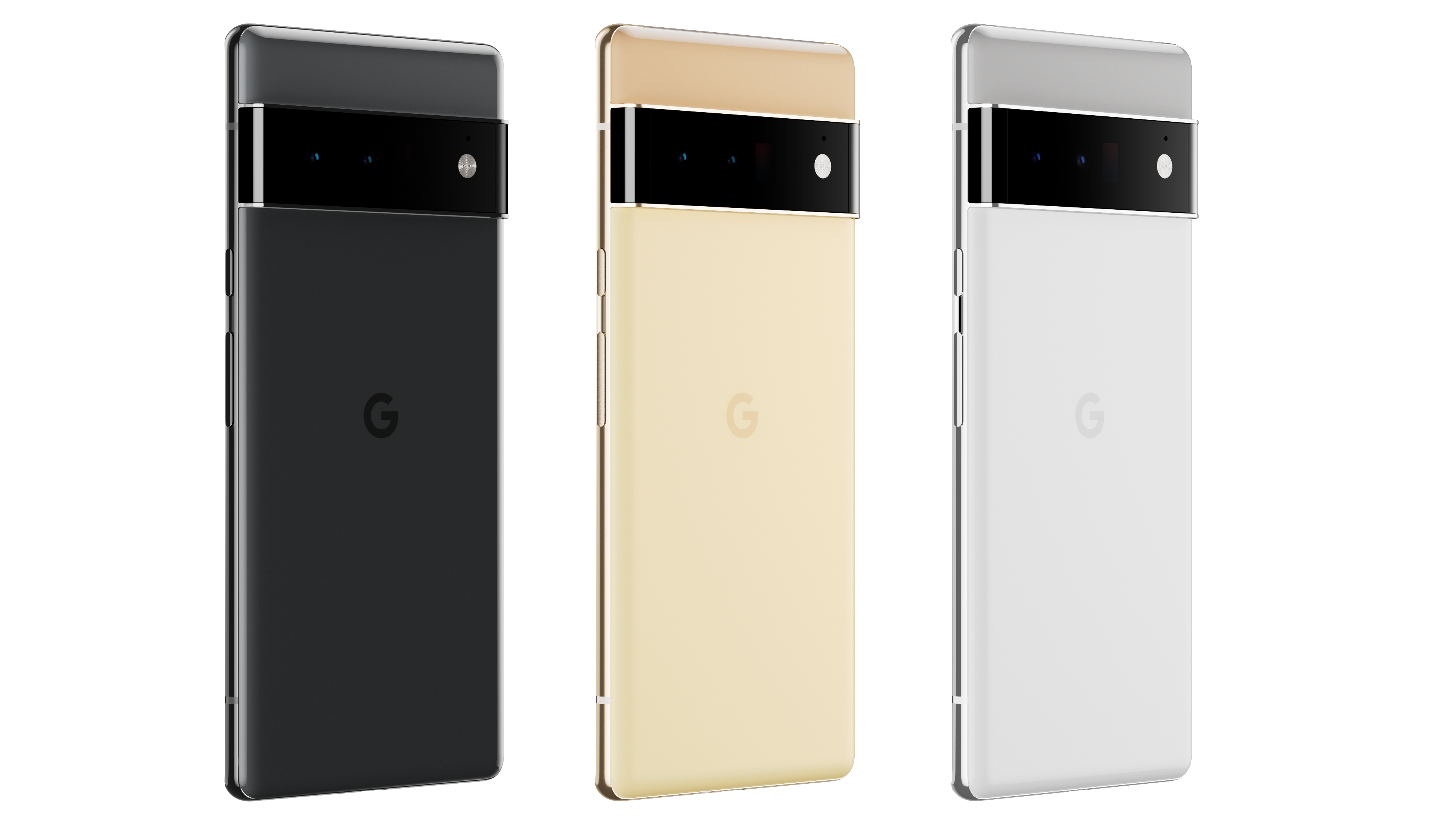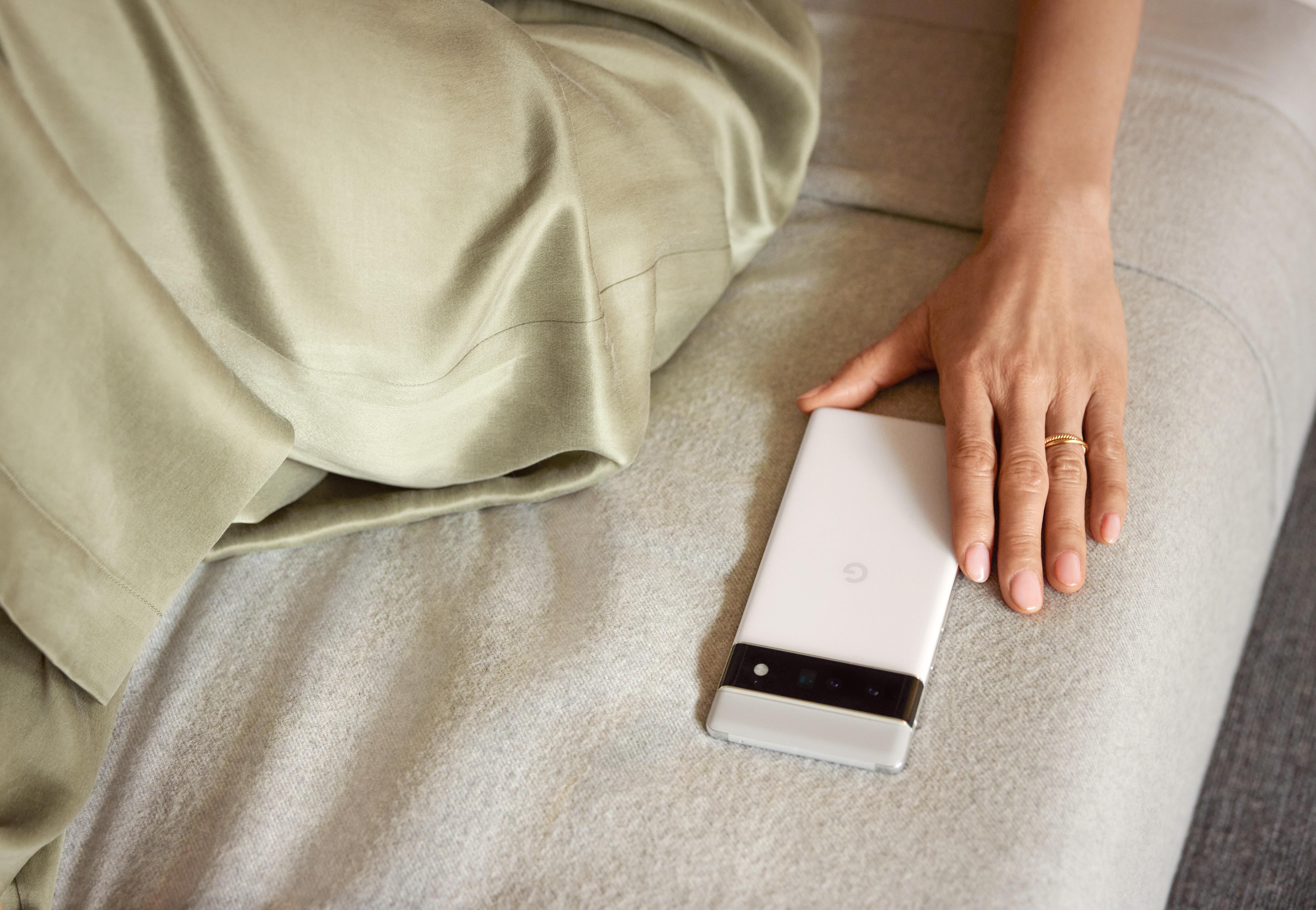Following months of leaks that have essentially revealed everything about the phones, Google has just formally announced the Pixel 6 and Pixel 6 Pro. The new models are the first to run Android 12 out of the box and the first Android phones period to guarantee you five years of updates, finally competing with Apple. This is also Google’s first smartphone chipset to use its in-house Tensor processor, and Google managed to match that with other generally flagship-level specs and plenty of impressive-looking software features, all at a pair of surprising prices.
We shouldn’t judge things too early here, and keep an eye out for our review. But, on paper, it looks like Google’s got a major success on its hands.
Pixel 6 Pro
The higher-end of the pair is the new Pixel 6 Pro, and all of the leaked details panned out:
|
Chipset |
Google Tensor |
|
RAM |
12GB |
|
Storage |
128, 256, or 512GB; UFS 3.1 |
|
Display |
6.7” QHD+ (1440x3120, 19.5:9) LTPO OLED, 120Hz, Gorilla Glass Victus |
|
Battery |
5003mAh, 30W (USB PD PPS) wired charging, up to 23W wireless charging |
|
Rear Cameras |
50MP f/1.85 primary (82° FoV w/OIS), 12MP f/2.2 ultra-wide (114° FoV), 48MP f/3.5 telephoto (23.5° FoV w/OIS, 4x optical and up to 20x “Super Res Zoom”) |
|
Front Camera |
11.1MP f/2.2 (94° FoV, fixed focus) |
|
Connectivity |
5G, Wi-Fi 6E (802.11ax), Bluetooth 5.2, NFC, Ultra-Wideband |
|
Misc |
IP68, In-display fingerprint sensor, USB Type-C 3.1 Gen 1, Dual-SIM via eSIM, reverse wireless charging |
|
Dimensions |
163.9 x 75.9 x 8.9 mm, 210 g |
|
Colors |
Sorta Sunny, Cloudy White, and Stormy Black |
|
Price |
Starts at $900 |
When it comes to hardware, the only real question is how the new Tensor chipset might perform because most of the other specifications Google crammed in here are known and premium quantities. There’s 12GB of RAM — 4GB more than the Pixel 5, and twice as much as the Pixel 4, arguably Google’s last “real” flagship phone. Storage options extend from 128GB to 512GB with fast UFS 3.1 speeds. That’s quite a spread compared to prior Pixels, which caped out at (Pixel 3, Pixel 4) or only offered 128GB (Pixel 5).
The 6 Pro has a big 6.7” 1440p display that both hits a high 120Hz refresh rate and uses LTPO for power savings, adaptively dropping that refresh rate when necessary. Like it or hate it, it’s got curved edges, unlike the flat Pixel 6. It’s topped with the latest Gorilla Glass Victus, the same as the back of the phone. And the fingerprint sensor has moved under the display itself, as with many competing flagships — optical, not ultrasonic.
A big 5,000mAh battery promises decent longevity, plus fast (for the US) charging: 30W wired courtesy of the relatively unused PPS standard for USB Power Delivery, and up to 23W speeds when charging wirelessly with Google’s own charger, plus reverse wireless charging. And when it comes to connectivity, you get what you’d expect: Optional mmWave 5G, the latest 6GHz-enjoying Wi-Fi 6W, Bluetooth 5.2, NFC, and new ultra-wideband functionality — right now, it doesn’t do much, but it’s in there and will be handy for things like digital car keys.
The cameras are a big focus this year, delivering the first real upgrade to the primary sensor that Pixels have ever had, really. Google switched from the aging 16MP Sony IMX 363 to a much larger 50MP sensor — not just bigger in terms of pixel count, but in terms of physical area, too, competing with recent flagships. Google says it can capture 150% more light. The ultra-wide camera is also new according to specs, with a lower 12MP resolution compared to the Pixel 5’s, but bigger pixels that should enhance light-gathering ability. And, of course, there’s the new folded lens/periscope telephoto that’s all new and captures content at a 4x relative “zoom” compared to the primary camera, further supporting up to 20x “zoom” courtesy of Google’s Super Res Zoom.
The cameras are also getting some big new software improvements on top of these hardware changes. There’s a new Magic Eraser mode that’s able to automatically suggest bits of photos to edit out (though you can also manually select content to remove), and — poof! The details are gone. There’s a Motion Mode with two sub-modes that can blur content for stylistic effect, either turning moving objects into a blur or blurring a background to better visualize motion. Face Unblur sharpens faces that might be in motion (see: kids), and Google has better tuned general camera performance to suit more skin types with an always-on “Real Tone” effect. There’s also a speech enhancement feature for selfie videos to reduce ambient noise and a new set of white balance controls that join the existing brightness and contrast sliders Pixels enjoy.
On top of all that, Google’s also rolling out so many new software features I’m frankly terrified for documenting them all in my review. Joining all the existing Assistant-powered call features are new Wait Times and Direct My Call features. The first helps you better figure out when to call to avoid long wait times, and the second transcribes menu options into text so you can more simply and easily tap your way through an obnoxiously nested set of automated options. There’s also Live Translate which promises fast and simple translations for text, media, your camera, and an interpreter mode, and the At A Glance widget can even show your boarding passes and flight information now, among other changes.
And this is all in addition to the “basic” Android 12 features for Pixels that we’ve been covering for the last eight months, including the new dynamic Material You theming, fancy search, privacy improvements, etc. In one final software-themed hurrah: Google’s finally stepped up and promising five years of security patches. That’s more than Samsung’s four-year promise and nearly up to Apple’s standards, which aren’t defined in terms of years, but often meet or exceed five years of support.
Lastly, Google found a way to cram all this in at a starting price of $900. That’s pretty stunning.
Pixel 6
The Pixel 6 enjoys many of the same benefits as the bigger and more expensive Pro model, but things are objectively cut down a little.
|
Chipset |
Google Tensor |
|
RAM |
8GB |
|
Storage |
128 or 256; UFS 3.1 |
|
Display |
6.4” FHD+ (1080x2400, 20:9) OLED, 90Hz, Gorilla Glass Victus |
|
Battery |
4614mAh, 30W (USB PD PPS) wired charging, up to 21W wireless charging |
|
Rear Cameras |
50MP f/1.85 primary (82° FoV w/OIS), 12MP f/2.2 ultra-wide (114° FoV) |
|
Front Camera |
8MP f/2.0 (84° FoV, fixed focus) |
|
Connectivity |
5G, Wi-Fi 6E (802.11ax), Bluetooth 5.2, NFC |
|
Misc. |
IP68, In-display fingerprint sensor, USB Type-C 3.1 Gen 1, Dual-SIM via eSIM, reverse wireless charging |
|
Dimensions |
158.6 x 74.8 x 8.9 mm, 207g |
|
Colors |
Stormy Black, Kinda Coral, Sorta Seafoam |
|
Price |
Starting at $600 |
Hardware-wise, the Pixel 6 shares some of its internals with the Pixel 6 Pro. You still get the new Tensor chipset, but it has less RAM and a smaller max storage option, paired with a smaller battery and slightly slower fast wireless charging (21W vs. 23W). Google didn't explain why it was ever-so-slightly slower to top up wirelessly.
In fact, there are a lot of little ways that the not-so-little Pixel 6 loses out to the Pixel 6 Pro. The front-facing camera on the Pixel 6 doesn’t have as wide of an FoV as the Pixel 6 Pro’s or as high a resolution. When it comes to connectivity, it lacks ultra-wideband support. There’s no telephoto camera, so you’ll be relying on Super Res Zoom for those shots. And the Pixel 6 uses Gorilla Glass 6 for the back compared to the 6 Pro’s Victus.
The displays are also very different. Though the two devices are close in size, the Pixel 6 has a lower resolution display at “just” 1080p, reaching a lower pixel density and a lower 90Hz refresh rate. However, it is a flat display, unlike the curved-edge version in the Pixel 6 Pro, which some will appreciate. The smaller phone’s screen also isn’t LTPO, as the Pixel 6 Pro’s is, which could make a dent in battery life.
When it comes to software features, you can expect most of the same things we mentioned above for the Pixel 6 Pro: Android 12, new camera features, new call features, etc. Google’s also making that same five-year update promise. Prices start at $600.
We won't’ dive into the design too much here (that’s being reserved for our upcoming hands-on coverage), but the Pixel 6 series marks a drastic shift in Google’s approach. On paper, these are flagships in a way no Pixel phone has been for a long time, and somehow Google managed to bring us both at what look like damn good prices. The wait for our review during this pre-order period might be a whole lot more tempting than it usually is.




.png)
.png)
